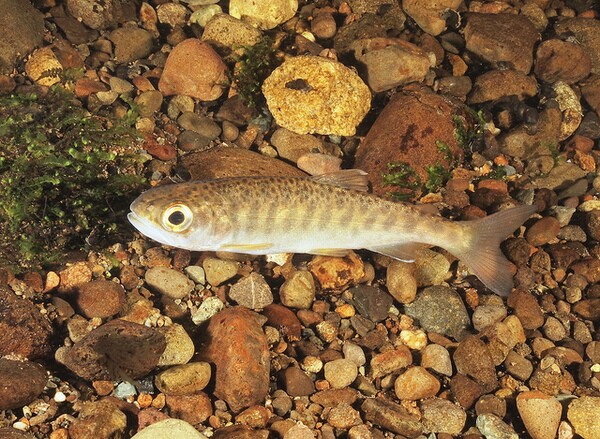Salmon Defenders Gain Legal Victory For California's Best Coho Stream

We reported in December on a complex legal contest between Marin County and a group of wildlife activists seeking to protect coho salmon in bucolic West Marin. Today, an update: the California Court of Appeals have handed a victory to the friends of the salmon.
At issue is the Marin Countywide Plan drafted in 2007 that, according to the lawsuit by the Salmon Protection and Watershed Network (SPAWN), didn't examine the cumulative impact of development on salmon and steelhead habitat in its Environmental Impact report (EIR). SPAWN also charged that Marin County didn't act quickly enough to enact setback regulations that would keep new development out of the creeks.
On Wednesday, the Court of Appeals agreed with SPAWN, sending the lawsuit back down to the lower court with instructions that Marin County redraft the plan's EIR to assess what development would do to West Marin's salmon and steelhead.
Though it's close enough to the urban Bay Area to offer a relatively easy drive for affluent commuters, West Marin's landscape is relatively undeveloped compared to neighboring counties. A network of state parks, watershed lands, agrcultural easements, and National Park Service holdings have kept much of the land in West Marin in more or less undeveloped condition. As a result, Lagunitas and San Geronimo creeks, which drain a large area north of Mount Tamalpais into Tomales Bay, have remained excellent habitat for the Endangered local population of coho salmon.
As a result, the coho run in those two creeks -- the last such run in California not sustained by hatchery fish -- remained robust until just a few years ago. But a combination of drought, a warming climate, and development has eroded the run's numbers, with a serious crash in 2009.
Coho require clear pools with exposed gravel beds in order to spawn. Streamside development such as building, brush clearing, and paving reduces water quality. It can also cause silt from runoff to fill in the spaces in the gravel beds in which female coho would otherwise lay their eggs, reducing the ability of the fish to reproduce.
Protecting a band of streamside vegetation reduces silt and other runoff into the creeks, helping to maintain the coho's spawning habitat. And the Court of Appeals now agrees that Marin County needs to take that into account when crafting its plan for countywide development.
"It's a damn shame that the Marin Supervisors have wasted hundreds of thousands of taxpayer dollars and years of inaction instead of working with SPAWN to take common-sense actions to save these endangered fish," said wildlife biologist Todd Steiner, SPAWN's executive director. "We have said from day one that we are ready to sit down with the County to create science-based regulations that give coho salmon a fighting change at survival and recovery."


